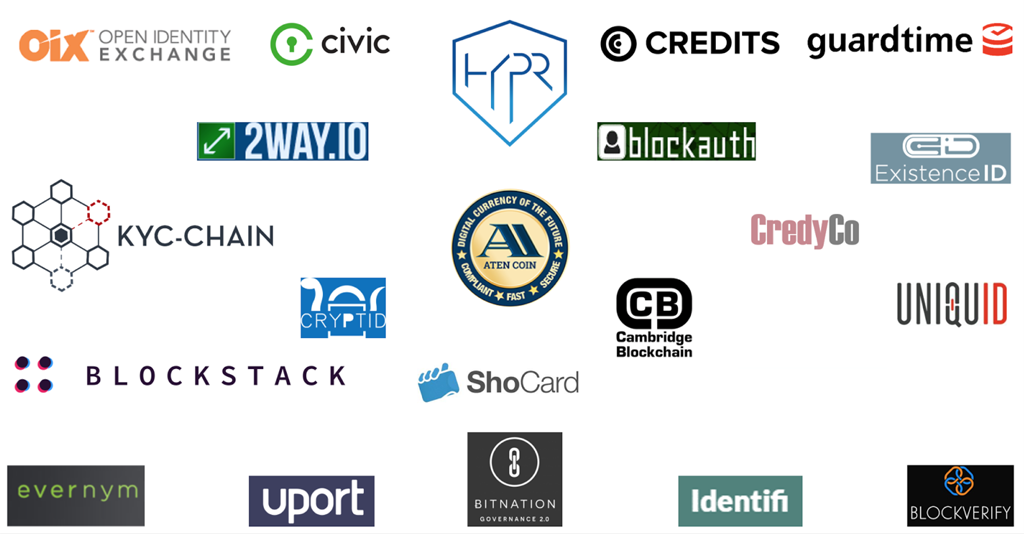21 companies using blockchain for authentication and identity management
 There are many options for using the blockchain outside the financial sphere. For example, in the field of personal identification: digital identity, passports, e-residency, birth and marriage certificates, identity cards, logins and passwords, and so on. By creating a digital identity based on the blockchain, a person receives more effective personal data management tools. He can determine who will own them and have access to them.
There are many options for using the blockchain outside the financial sphere. For example, in the field of personal identification: digital identity, passports, e-residency, birth and marriage certificates, identity cards, logins and passwords, and so on. By creating a digital identity based on the blockchain, a person receives more effective personal data management tools. He can determine who will own them and have access to them.Combining the principles of a distributed registry and identification, a digital ID can be used as a kind of “digital watermark”. Such a “watermark” can be assigned to virtually every online transaction involving different types of assets. Here is a list of pioneering companies creating blockchain-based solutions for digital identity management and authentication. All these solutions find interdisciplinary application.

The 2WAY.IO solution allows converting public nodes (nodes) to private ones by adding access levels. Private nodes can combine storage of information and secure communication channels. They are user-controlled (privacy and security are at the level of the basic system design) and therefore do not require any sacrifices on the part of security in favor of the UX. Such systems are blockchain independent at the same time and represent a trusted third party. They need only a mediator or blockchain, if both parties agree to add another side to the interaction.
')
Atencoin is a first-generation regulatory digital currency based on personal identification. Regulatory digital currency is a currency that conforms to the norms of state legislative regulation. The National Fund is supported by the National Fund Aten Coin (NAC) - an organization focused on supporting digital currencies and blockchain-based identification methods.
BlockAuth allows users to manage their own digital identity registry. This makes it possible to provide personal data for verification.
Blockstack provides decentralized DNS, a decentralized public key distribution system, and a registry for applications and user identities. The personal user API comes with the Blockstack application and works with a wide variety of entities: from identity and authentication to data storage. Applications can request user permissions and access reading and writing user data.
Bitnation is a “public services 2.0” platform based on the blockchain. The purpose of the platform is to provide the same services as government agencies, but in a decentralized and voluntary manner, regardless of geographic location. Bitnation has developed an identification solution that currently includes a blockchain-passport and a marriage certificate.
BlockVerify offers anti-fallback solutions on the blockchain. The solutions use blockchain to combat counterfeit and counterfeit in the pharmaceutical and jewelry industry, electronics and luxury goods.
Cambridge Blockchain LLC develops its digital identity software solutions in collaboration with leading international financial institutions. Commercial product introductions are scheduled for the end of 2017. Distributed architecture solves the problem of the balance of transparency and privacy, which significantly reduces the period of adaptation of new customers, reduces costs and helps to meet the requirements of legislation in this area. All this is due to a unified, systematic, trust-based approach to basic customer data. Cambridge Blockchain won many fintech competitions, including BBVA Open Talent 2016 and Santander InnoVentures Distributed Ledger Challenge. Cambridge Blockchain is a “graduate” of the FinTech Innovation Lab 2016 mentoring program. Its founders are the non-profit Partnership Fund for New York City and consulting company Accenture.
Civic is a blockchain platform for managing digital identities, with which users can register and verify their personal data, as well as hide their identity to prevent data theft and fraudulent activities with a credit history. Civic's main goal is to combat theft of customer data and online fraud.
The Credits platform allows companies to quickly and easily create reliable blockchains, with the help of which the problems of identification, authentication, and reconciliation will be solved in various industries. The platform provides the ability to create encrypted digital identities that can replace dozens of usernames and passwords, while at the same time offering advanced security mechanisms. All this will allow companies, institutions, authorities and customers to significantly save their time, effort and money. In other words, the service provides a kind of "golden record" of identity, which will work not only in the banking sector, but also anywhere in the world, in any electronic media.
CredyCo - SaaS-solution for document verification. Built on smart contracts and identity technology on top of the blockchain. This ensures the accuracy and incontestability of statements and declarations.
Cryptid eliminates the possibility of identity fraud by adding additional identification and encryption factors. Cryptid takes the provided data and repacks it in a compressed format that is understandable to its systems, at the same time generating the identification data of the application itself. All data is encrypted with the password provided and then transferred to the blockchain. After that, the user is given a unique identification number. It is actually a pointer to information in the blockchain itself and can be stored on virtually any carrier, starting with magnetic stripes, ending with a QR code.
Evernym is a global, fully open source, attributed, autonomous sovereign network of identity graphs. The network is built on advanced dedicated, ensuring privacy and publicly accessible distributed registries.
ExistenceID is a secure digital identification system. Stores and allows you to safely transfer valuable data about the user's identity. The personal identification capsule service allows you to assess how well the data provided describe the user as a living and real person. In this case, the ExistenceID processes all personal user data using protocols of zero knowledge and therefore does not know anything about it.
Guardtime's BLT is the blockchain standard for digital identity - an authentication and digital signature protocol that should replace the RSA cryptosystem, which is currently the standard for digital signatures. Unlike RSA, which uses an asymmetric encryption key that is vulnerable to quantum computing, the BLT is built on a quantum-secure keyless- entry infrastructure (KSI) technology , which uses only hash encryption.
The HYPR biometric security package offers companies a fully interoperable solution to protect users on mobile platforms, PCs and the Internet of Things. HYPR allows you to choose between recognizing voice, face, eyes or fingerprints. The decentralized authentication platform allows organizations to work with biometric data without worrying about hacker attacks on a biometric server or a centralized database with passwords.
Identify is a blockchain-based startup that develops an address book where users can attach personal profiles and identifiers to create a trusted identity. Users can store contact information in it, such as a current phone number or bitcoin address, as well as provide other users with a trust rating and feedback.
Open Identity Exchange (OIX) is a non-profit, technologically independent organization that provides joint product development by participants from different industries. Its goal is to accelerate the implementation of digital identity services based on open standards. OIXNet owned by OIX is the registry. This is the official publicly accessible online repository of documents and information relating to identification systems and their participants. Being called a “registry”, it functions as an official and centralized source of documents and information, just like a state registrar. In other words, individuals or legal entities can register documents and information in the OIXnet registry in order to notify the public about their content. In turn, those who seek information may apply to a single authoritative platform.
KYC-Chain is an innovative platform built on the convenience and security of distributed registry technology. It allows users to operate their digital identity, and businesses and financial institutions to manage customer data in a reliable and simple way.
ShoCard offers a digital identity that is focused on protecting customer data. The product is as easy to use as a passport. It is optimized for mobile platforms, and reliably protected even by the standards of banks. The user identity is encrypted, hashed, and then inscribed in the blockchain, from where it can be invoked as needed. In practice, users will give banks temporary access to the private part of the blockchain to confirm their identity. After this, the bank creates its own record by which it can be verified that Ivan Ivanovich is the same Ivan Ivanovich.
UniquID provides secure identity management integrated with fingerprint recognition and other biometric data on personal devices. It can work on custom equipment, servers, PCs, smartphones and tablets, as well as battery and low-power devices, ensuring data integrity and mutual compatibility with the existing infrastructure.
uPort, in collaboration with Microsoft, is creating a secure, easy-to-use system for autonomously sovereign identity based on Ethereum. The uPort technology consists of three main components: smart contracts, developer libraries and a mobile application. The application stores user keys. Ethereum smart contracts form the core of identity and contain logic that allows users to recover their identity when their mobile device is lost. And, finally, developer libraries are needed so that third-party developers can integrate uPort support into their applications. In late January, Microsoft announced a collaboration with Tierion to create a service that will generate, manage, and validate certificates of authenticity.

Source: https://habr.com/ru/post/373055/
All Articles